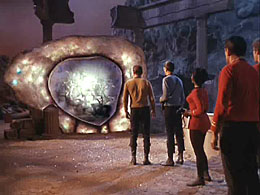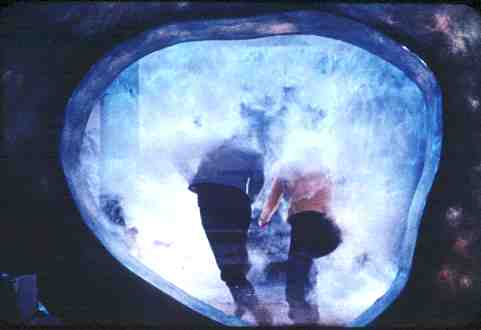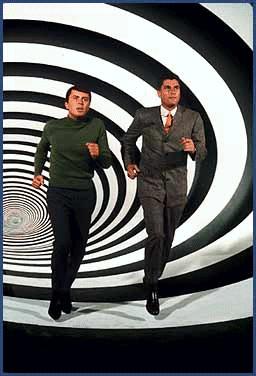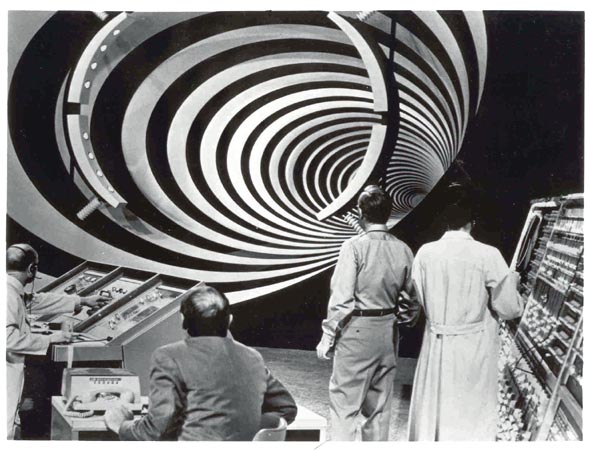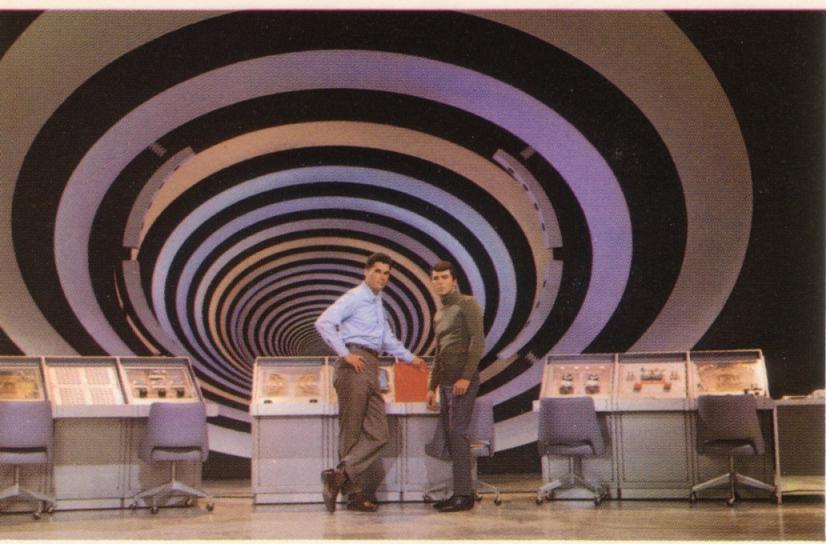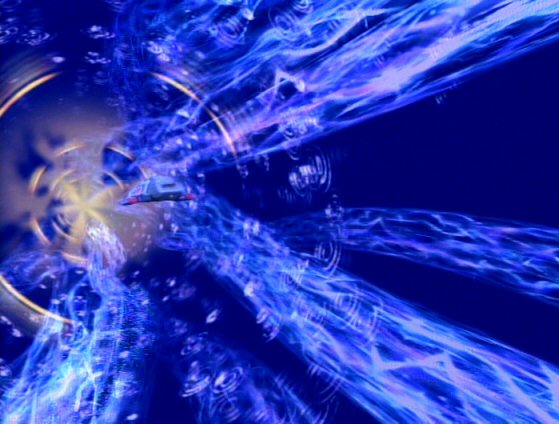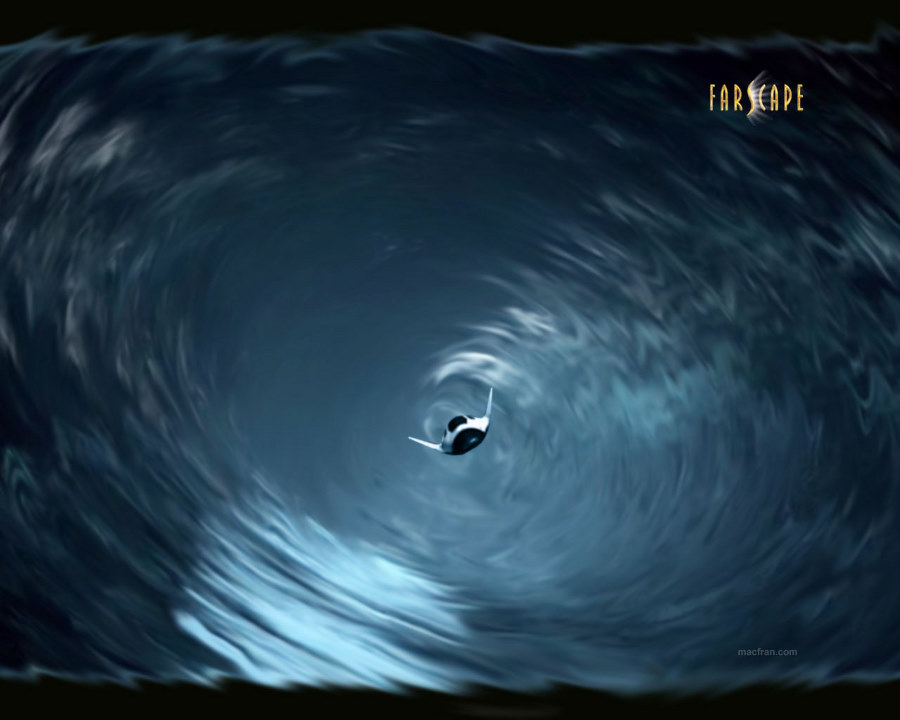|
Other Gates in Popular Culture |
||||
|
"City on the Edge of Forever" ...
"The City on the Edge of Forever" is the penultimate episode of the first season of Star Trek. It is episode #28, production #28, first broadcast on April 6, 1967. It was repeated on August 31, 1967 and marked the last time NBC aired the series on Thursday nights. It was one of the most critically acclaimed episodes of the series and was awarded the 1968 Hugo Award for Best Dramatic Presentation. The teleplay is credited to Harlan Ellison, but was controversially rewritten by several hands before filming. It was directed by Joseph Pevney. It guest-stars Joan Collins as Edith Keeler. Overview: The crew of the Enterprise discovers a portal through space and time, which leads to McCoy accidentally altering history.
...
...
... |
||||
|
...
The Sliders vortex (ERP bridge) Sliders is an American science fiction television series that ran for five seasons from 1995 to 2000. The series focuses on a group of travellers who "slide" between parallel worlds by use of a wormhole referred to as an "Einstein-Rosen-Podolsky bridge."
Vortex
The vortex, a wormhole opened by the timer that the Sliders carry around, is the means by which the Sliders travel from one parallel universe to another. In the pilot and several other episodes, Quinn refers to the vortex as an "Einstein-Rosen-Podolsky bridge," a fictitious term that may have arisen out of a confusion between the actual term Einstein-Rosen bridge (a type of wormhole in physics) and the Einstein-Podolsky-Rosen paradox (a famous thought-experiment in quantum mechanics, which is unrelated to wormholes). The look of the vortex changes throughout the series. From the first to third season, the vortex is a bluish whirlpool, and is somewhat transparent. In the fourth and fifth seasons, the vortex appeared as a mostly-blue whirlpool with some blue-green, and is entirely opaque.
|
||||
|
...
Project Tic-Toc is a top secret U.S.
government effort to build an experimental time
machine known as "the Time Tunnel." When the costs
of the project approach those of the entire U.S.
space program, a United States Senator Leroy Clark
(Gary Merrill) launches an investigation of the
project. The Senator feels that the tunnel has cost
too much money for too little reward. At his request
the Senator is allowed to visit the project base and
be given a tour. Once he reaches the central control
room the Senator explains his complaints to the
project heads. The Senator then says that he wishes
to close down the project as a waste of time and
money that has not worked.
Key Time Tunnel scientist, young physicist Dr. Tony Newman (James Darren) turns the machine on and sends himself back in time in an attempt to prove that the Time Tunnel project funds were not wasted. In so doing, Newman becomes "lost in time." The Time Tunnel top personnel can see through the Tunnel that Tony Newman is aboard the soon to sink Titanic. They can also see that he cannot escape before the sinking, and they cannot retrieve him. In an attempt to rescue his younger friend, another key Tic-Toc scientist Dr. Doug Phillips (Robert Colbert) enters the Time Tunnel as well. However, the system was still being developed and tunnel operations was never able to bring them home. As the series progresses, the two time travelers are swung from one period in history to another, allowing episodes to be set in the past and future.
.. |
||||
|
Deep Space Nine Bajoran Wormhole ...
The Bajoran wormhole opening, also known as the Celestial Temple, in the Bajoran system. In the pilot, the station is moved near the just-discovered Bajoran wormhole, allowing access to the distant, unexplored Gamma Quadrant. It quickly becomes a center for exploration, interstellar trade, political maneuvering, and eventually open conflict. In the first episode, Starfleet Commander Benjamin Sisko takes charge of Deep Space Nine. He and Jadzia Dax stumble upon the first stable wormhole ever found and discover that it is inhabited by beings who are not bound by normal space and time. To the strongly religious people of Bajor, the wormhole aliens are their gods (the Prophets) and the wormhole itself is the long-prophesied Celestial Temple, where they reside. Sisko himself is hailed as the Emissary of the Prophets, through whom the Prophets primarily act. This provides the basis for a long-lasting story arc. Sisko initially considers his role as a religious icon with open discomfort and skepticism, referring to the Prophets simply as "wormhole aliens" and striving to keep his role as commander of the station distinct from any obligations that the Bajorans try to place on him. Later, he becomes more accepting of his role and, by the end of the series, he openly embraces it.
The USS Rio Grande inside the newly discovered Bajoran wormhole |
||||
|
...
.. Wormholes This Wormholes That ... |
||||
| FAIR USE NOTICE: This page contains copyrighted material the use of which has not been specifically authorized by the copyright owner. Pegasus Research Consortium distributes this material without profit to those who have expressed a prior interest in receiving the included information for research and educational purposes. We believe this constitutes a fair use of any such copyrighted material as provided for in 17 U.S.C § 107. If you wish to use copyrighted material from this site for purposes of your own that go beyond fair use, you must obtain permission from the copyright owner. | ||||
|
|

